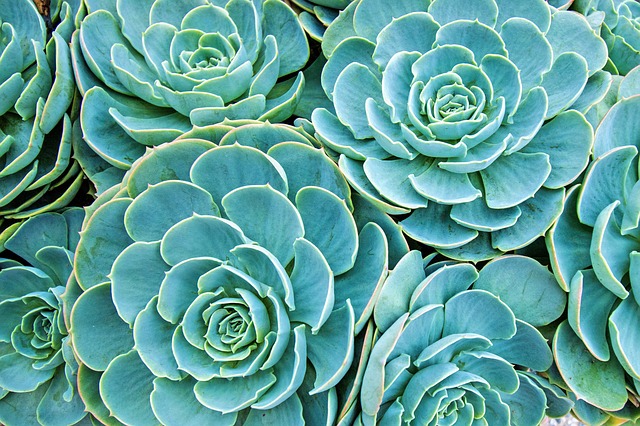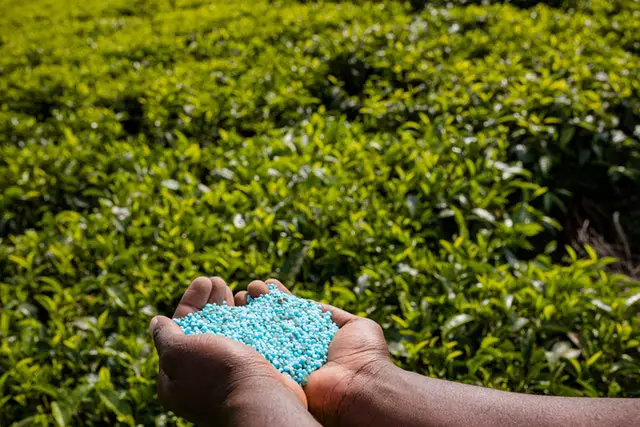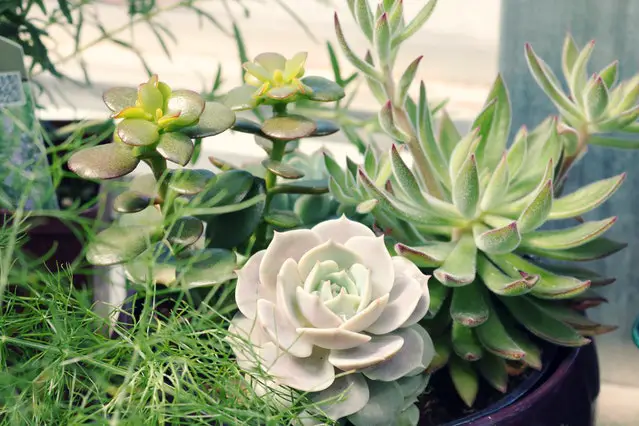Watching a succulent grow brings so much hope and warmth to your life. So, seeing succulent leaves curling down can be worrisome to any plant parent. These plants naturally have fleshy, turgid leaves that adapt well to all climates and environmental conditions.
Succulents have various families and come in all shapes and sizes. They are easy plants to grow and require little care and tending. For most succulents, ideal conditions involve nutrient-rich and well-draining soil, bright indirect sunlight, and a moderate water supply.
So, the causes of succulent leaves turning down involve poor management and exposure to harsh weather conditions. In addition to these causes, over-fertilization can also lead to succulent leaves curling down due to the buildup of excess salts in the soil. This article explains the possible causes of succulent leaves turning down and suggests management tips to help you keep the succulents healthy.
Common Causes for Succulent Leaves Curling Down

There are several causes for succulent leaves turning down, but the most common of these are:
1. Prolonged Exposure to Direct Sunlight
Most succulents make good houseplants because they appreciate bright, indirect sunlight. Like all plants, they need light to complete the process of photosynthesis. Yet, they do not do great when under the sun for long hours.
This is because they lose significant amounts of water trying to keep cool. They also experience sunburns that destroy the plant tissues, making them sick. Consequently, they lose turgor, leading to succulent leaves turning down.
What to Do
Keep potted succulents in bright places around your house. This supplies sufficient light to keep the succulent healthy without the sunburn effect of direct sunlight. If these succulents are in your garden, however, provide a shed to serve as a protective covering against the scorching sun.
Succulent leaves parts that experience extreme sunburns may not recover. So, after taking the succulents out of the scorching sun, trim these parts. This will give room for new growth and help to keep the succulent healthy.
Pro Tip: Succulents require a moderate supply of light for optimal growth. So, you may need growth lights during winter or periods of inadequate sunlight. These supply the plant with adequate lighting for photosynthesis and growth.
2. Wrong Fertilizer Application

Fertilizer application is essential in the growth process of succulents. Yet, most available inorganic fertilizers contain salts such as nitrogen and urea, which are acidic. The application of high amounts of these fertilizers turns the soil acidic.
Consequently, the acidic soil drains water from the succulent through osmosis. This causes plant dehydration and presents as the succulent leaves turning down.
If you do not correct this promptly, this might cause irreversible damage to the succulents and, in severe cases, death.
What to Do
When the potting soil is acidic, you must transplant the succulent to more friendly soil. To do this:
- Break the soil around the plant roots gently with a garden fork. This prevents injury or trauma to plant roots during transplanting
- Wash off the soil on plant roots in running water
- Pat the roots dry with clean paper towels
- Check for dead, rotting, or wilting roots and trim them off
- Plant in rich potting soil mix and water moderately
- Observe for plant growth
Pro Tip: There are organic and succulent-friendly fertilizers available to plant parents. You can also use DIY fertilizers on your succulents. Also, fertilizer is most appropriate for most succulents in the growing season, during the warm summer.
3. Watering Needs
Succulents are natives of arid, tropical climes. So, they have adapted to a sparse water supply, and their parts store water. This makes them easy to tend, as they can go without water and thrive for long periods.
Yet, the plant parent must be vigilant to ensure the water supply is adequate to prevent wilting. This is because extremes of too little or too much supply of water will cause harm to the succulents.
Overwatering

A plant parent’s instinct is to smother their succulents with love. Often, we feel an urge to water our succulents routinely. This might cause flooding of the roots and decrease soil aeration. The succulents will suffer from malnutrition when roots rot, and this will cause the succulent leaves to turn down.
Underwatering
Due to a busy daily schedule, plant parents sometimes forget to water succulents. Succulents are such forgiving plants that they will still do well for a while. Yet, when there are extended periods of drought, the succulents lose their turgor and wilt. This presents as succulent leaves turning down. When you notice this, you must act promptly.
What to Do
You must maintain an optimal water supply for your succulents. Here are a few helpful tips:
- A light brown potting soil alerts you of dry soil
- Use a humidifier to mist the succulent leaves. This keeps them humid on warm days and helps them to maintain moisture.
- Introduce a pebble or stone bed beneath the potting soil to improve drainage and keep the soil moist
- The plant pot must have sufficient drainage to remove excess water from the soil.
Pro Tip: Including peat moss in the potting soil mix improves the aeration and draining ability of the soil. Also, avoid using clay soil or compact soil in the potting mix, as it increases the water retaining ability of the soil. It is best to use loamy soil as the potting soil for succulents.
Fun Fact
Succulents grow in adverse conditions. So, to protect themselves, they have adaptations that preserve them in temperature extremes. Do you know that the wax on most succulents protects them from the scorching sun and prevents them from freezing in extreme cold?
Their leaves often have spikes that decrease transpiration. This improves water storage and prevents excessive water loss in hot periods.
Summary
There are countless causes for succulent leaves turning down. Yet, you can avoid this with adequate and consistent care for your succulents. This article explains the common causes and gives top-notch tips to guide your gardening journey.
Understanding the causes of succulent leaves turning down helps you to improve your gardening routine. Succulent plants are hardy and thrive in all climes, but in optimal conditions, they blossom.
It will give you immense joy when your plants are robust and healthy. So, as a plant parent, you must improve your gardening skills and keep your plant babies healthy. Keep building on your gardening skills through the guidance of professional gardeners.
Frequently Asked Questions
Why is my succulent dying?
A significant cause of succulent death is overwatering. This drowns the succulent’s roots and causes root rot. It also creates a conducive environment for pathogen growth. So, overwatering predisposes succulent plants to fungal and bacterial infections. These may result in succulent leaves turning down.
Why are my succulent leaves curling down?
Your succulents may be curling down for several reasons. These include overwatering or underwatering, wrong fertilizer application, bacterial or fungal infection, or pest infestation. Employing optimal management protocols protects your succulents from curling down.
How do you revive a dying succulent?
To revive a dying succulent, you must tackle the cause of succulent death. There are several causes for wilting or the death of succulents so misdiagnoses can be fatal. If the soil is water-logged, allow it to drain or change the potting soil. This gives the succulent a healthy environment in which to thrive.
Do succulents change color when overwatered?
The succulents may look unhealthy and turn slightly grey or brown when overwatered. Yet, there might not be a color change, but you will notice the plant wilt. When this happens, improve soil drainage, or change potting soil.

Hey, I’m Lisa and I’ve been an avid gardener for over 30 years. I love writing, talking and living in the garden! Feel free to connect with me on my socials below

